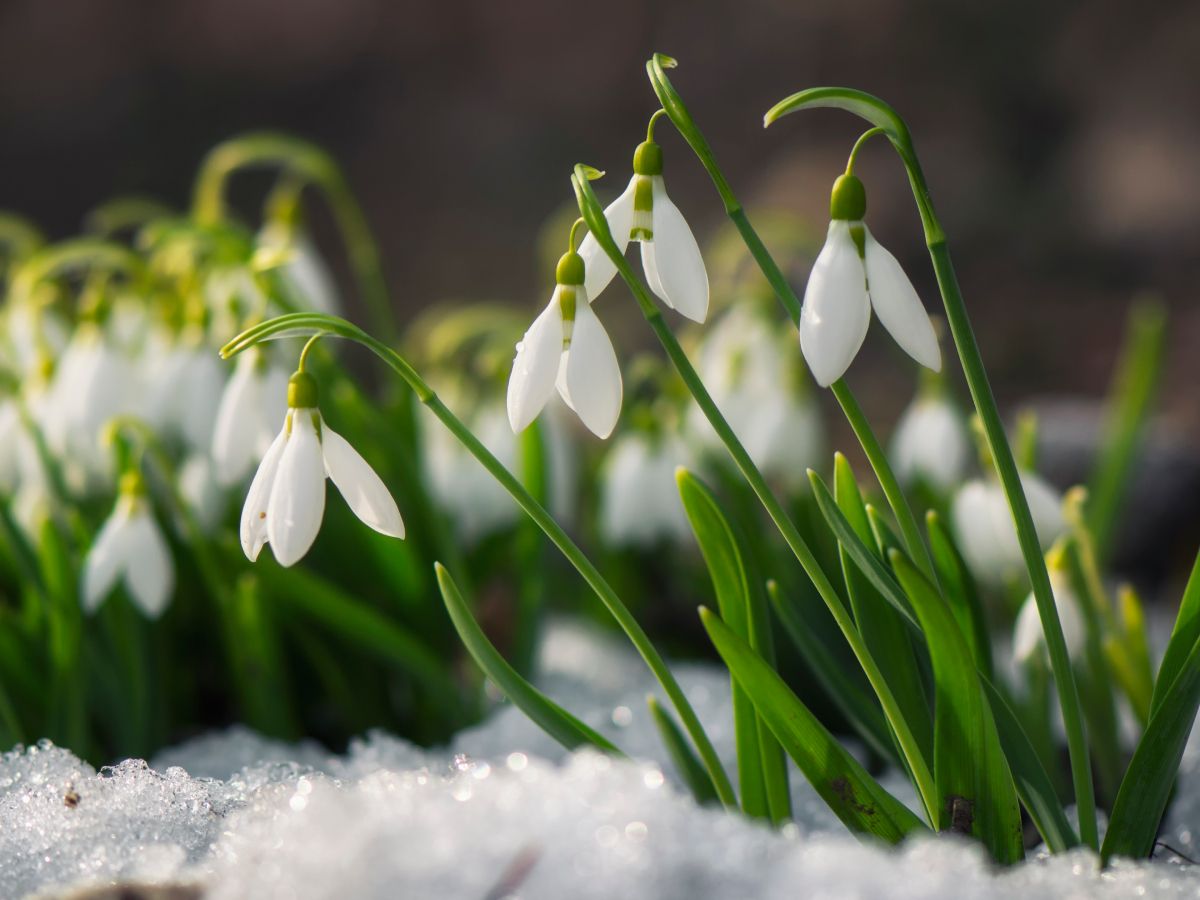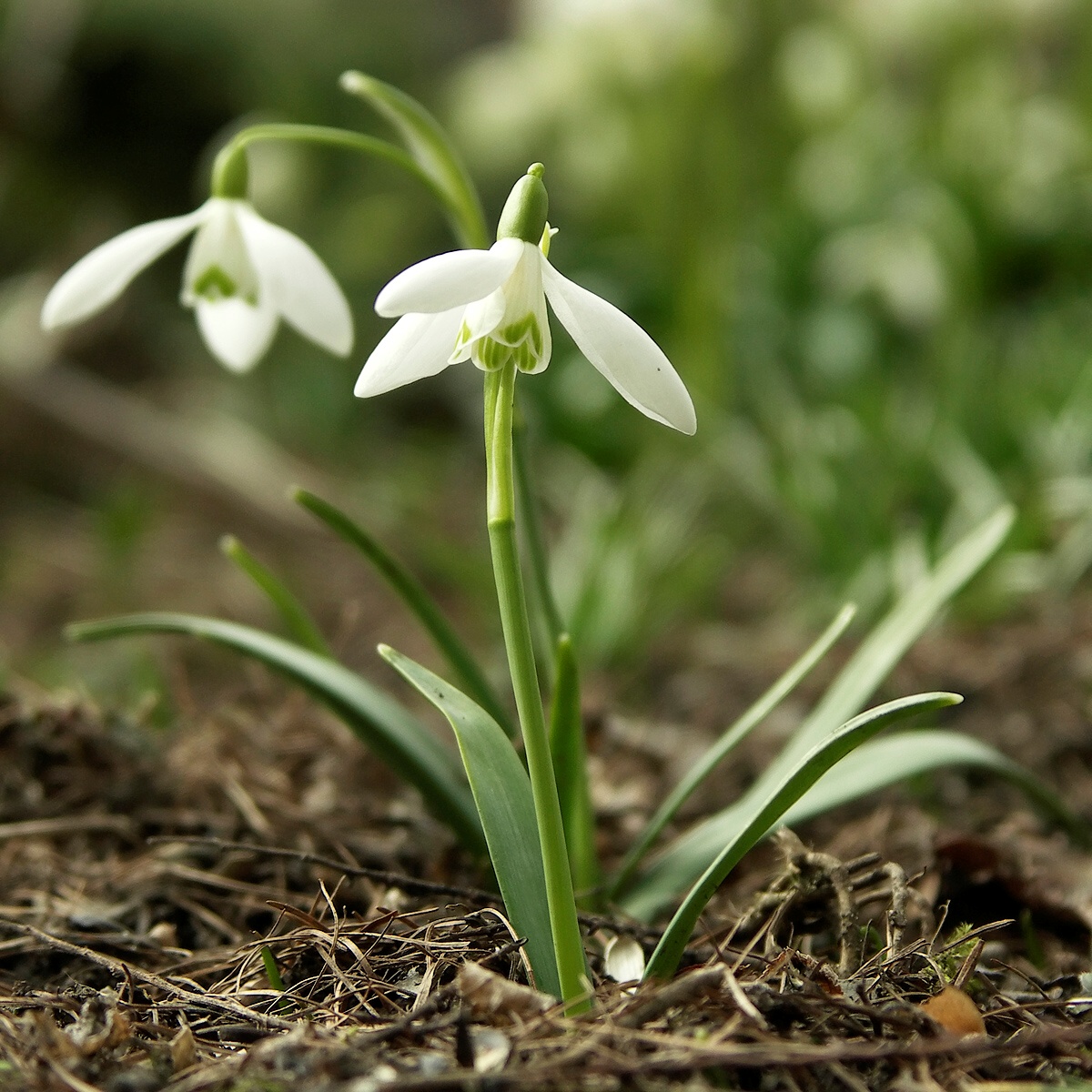The Delicate Charm of the Snowdrop: More Than Just a Pretty Face
When winter feels like it’s dragging on forever, just when you think the gray skies and chilly winds will never end, a little bit of hope pops up. And often, that hope comes in the form of a tiny, elegant flower – the snowdrop. These little beauties, with their nodding white petals, are usually one of the first signs that spring is just around the corner. But there’s so much more to these unassuming plants than just their pretty appearance.
A Sign of Spring and New Beginnings
For many, spotting the first snowdrops pushing their way through the cold earth is a real treat. They’re like a little “hello” from nature, a promise that warmer days and brighter colors are on their way. It’s no wonder they’re often seen as a symbol of hope, purity, and even new beginnings. After the starkness of winter, their delicate white flowers bring a touch of freshness to the landscape.

More Than One Kind of Snowdrop? Absolutely!
You might think a snowdrop is just a snowdrop, but there’s actually a whole world of different varieties out there! While they all share that classic bell shape and white color (sometimes with little green markings), there can be subtle differences in size, the shape of the petals, and even when they decide to bloom. Some might be taller, some might have more rounded petals, and some might flower a little earlier or later than others. For the real snowdrop enthusiasts, known as “galanthophiles,” hunting down these unique varieties can become a serious passion!
A Bit of History and Mystery
Snowdrops haven’t always been a common sight everywhere. There’s some debate about exactly where they originated, but they’re now widely naturalized in many parts of Europe and beyond. They weren’t always as popular as they are today, either. It seems their rise in popularity really took off in the 19th century. There’s even a bit of folklore and superstition surrounding them in some cultures. For instance, in some places, it was considered bad luck to bring a single snowdrop indoors!

Tough Little Survivors
Don’t let their delicate appearance fool you – snowdrops are actually pretty tough cookies. They’re adapted to flower in the cold, often pushing through snow and frozen ground. They have a clever way of generating their own heat to help them melt the snow around them! This resilience is part of what makes them so special – they brave the harshness of late winter to bring us a glimpse of the beauty to come.
Snowdrops and Our Gardens
For gardeners, snowdrops are a welcome addition. They’re relatively easy to grow and can create stunning drifts of white in late winter and early spring. They prefer well-drained soil and a bit of shade, and once they’re happy, they tend to naturalize and spread over time, giving you more and more of those lovely blooms each year. Plus, they’re generally not bothered by pests or diseases, making them a pretty low-maintenance way to add some early interest to the garden.
Beyond Beauty: Some Interesting Facts
Did you know that snowdrops contain certain compounds that have been studied for their medicinal properties? Galantamine, a substance found in snowdrops, is actually used to treat Alzheimer’s disease. It’s a fascinating example of how nature can provide us with valuable resources. Of course, you should never try to use snowdrops for medicinal purposes yourself, as some parts of the plant can be toxic if ingested.
In Conclusion
The snowdrop, with its simple yet elegant beauty, is so much more than just a fleeting winter flower. It’s a symbol of hope and resilience, a fascinating subject for plant enthusiasts, and even a source of potential medicinal compounds. These little white bells bring a welcome touch of grace to the late winter landscape and remind us that even in the coldest of times, new life and beauty are just around the corner.
Frequently Asked Questions About Snowdrops
Are snowdrops poisonous?
Yes, parts of the snowdrop plant, particularly the bulbs, contain alkaloids that can be toxic if ingested. It’s important to handle them with care and keep them away from children and pets who might be tempted to eat them.
When do snowdrops typically bloom?
Snowdrops usually start to bloom in late winter or very early spring, often between January and March in the Northern Hemisphere. The exact timing can vary depending on the species, the local climate, and the weather conditions in a particular year.
How do snowdrops spread?
Snowdrops primarily spread through their bulbs, which can multiply underground to form clumps. They can also spread by seed, although this is generally a slower process. Some varieties can also be propagated by dividing the bulbs when the plants are dormant.
Do snowdrops need a lot of sunlight?
Snowdrops actually prefer partial shade to full sun. They often thrive under deciduous trees, where they receive sunlight in the late winter and early spring before the trees leaf out, and then are shaded during the warmer months.
What is a galanthophile?
Snowdrop Plant
